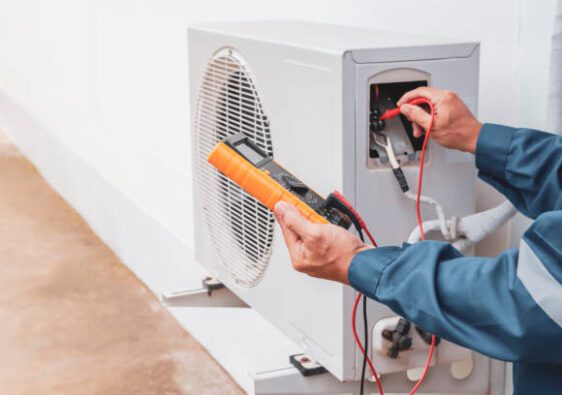If you’re worried that you have a pest infestation in your home, you’re in the right place.
Many types of pests infest residential properties. Whatever kind of pest you have in your house, they all want one thing – to make your home their new, permanent home.
Infestations are no laughing matter–they can spread disease, damage your properties, and mess with the psychological well-being of people who live in the home. Luckily for you, you’ve found the most comprehensive pest infestation guide in the world.
Let’s take a look at everything you need to know about signs of pests in a home.
Unusual Noises
If you start to notice strange noises coming from your walls or ceiling, it could be a sign of a pest infestation. Mice, rats, and other rodents will often make scratching or gnawing sounds as they try to create nests or find food.
Insects like cockroaches and beetles can also make scuttling noises as they move about your home. If you hear any unusual noises, be sure to investigate right away to see if there are any pests present.
Droppings or Shed Skin
Droppings can be left behind by a variety of pests, including mice, rats, cockroaches, and birds. They can be found in a variety of locations, such as on floors, countertops, and in cabinets.
If you see droppings, it’s important to clean them up immediately and to contact a pest control professional to determine what type of pest is present and how to best eliminate them.
Shed skin can also be a sign of a pest infestation. This is especially true if you see molted skin around doorways or windows, as this is where many insects enter homes.
Again, if you see shed skin, it’s important to clean it up immediately and contact a pest control professional for further assistance.
Gnawing Damage
Rodents, like rats and mice, are the most common culprits of gnawing damage. They may chew on wires and insulation, leaving chewed or frayed surfaces in their wake. You might also find telltale gnaw marks on walls or around wood furniture.
This can be on food packaging, furniture, or even electrical wiring. If the gnawing persists, then it is wise to call a professional to investigate and treat the problem before structural damage occurs.
Unexplained Odors
Signs of a pest infestation in your home can present in many ways, including unexplained odors. A musky smell or a sweet smell of decomposition can suggest a dead animal or a rodent problem.
Unfortunately, by the time you’ve identified the odor, the problem might already be out of control. Depending on the type of pest, the smell of a non-infested area can indicate when an infestation has happened.
This is such as smelling like a damp cellar or a musty odor. If you identify these strange odors, it could be a sign of having a minor or major pest problem that needs addressing promptly.
Many household pests, such as rats and mice, are known to produce strong and unpleasant odors as they move around your home looking for food and shelter.
Visible Insects or Rodents
Signs of a pest infestation in your home most commonly manifest in the form of visible insects or rodents. If you start to notice tiny crawling or flying bugs, as well as rodents like mice and rats, the chances are you have an infestation.
Common insects include ants, cockroaches, fleas, bed bugs, flies, and spiders. If you spot any of these animals in or around your home, it is important to take steps to eradicate the problem immediately.
Rodents can damage wiring and property, spread diseases, and contaminate food, so it is particularly important to keep an eye out for them.
If you see evidence of any of these pests, contact a local pest control specialist and have your home treated as soon as possible.
Nests and Hives
Nests and hives are obvious signs of pest infestation. Wasps and bees build their nests on the outside of your home, often near windows or beneath porches and eaves. Carpenter bees are a common culprit.
They drill holes into wooden siding and decks to build their hives inside. Ants also build nests outdoors, usually under rocks or in piles of leaves near the foundation.
These all point to a possible nest or hive inside or very near your home. If you suspect an infestation, contact a professional to safely and effectively remove them from your property.
Damage to Crops
One of the most common signs of a pest infestation in your home is damage to crops. Pests such as rats, moles, and weevils can wreak havoc on your garden, making it impossible to enjoy homegrown fruits and vegetables.
Signs of crop damage include holes in the leaves, shriveled fruits, or misshapen vegetables. You may also find dead plants in your garden, or notice that pests have eaten away the stems, roots, or outer leaves of your plants.
If you spot any of these signs, it is important to take steps to control the pest population so it does not damage your crops further.
Presence of Ticks on Your Pets
Ticks feed on the blood of animals and can spread diseases to them and can even find their way to humans too. If you notice ticks on your pets, such as at the base of their ears, under their fur, or around their collar area, then this is a sign of a pest infestation in your home.
You should also check your pet regularly for other signs of pests, such as fleas and mites. If your pet is constantly scratching their fur or excessively licking themselves, this could be a sign that these parasites are present in your house.
If you think that your home is infested with any pests, then it is best to act quickly. Get a professional to help you get rid of them and learn more about tick control so you can eliminate these pests in your home.
Learn the Signs of a Pest Infestation in Your Home Today
A pest infestation can have a major impact on the health of your home and your family. Everyone should be careful and keep an eye out for the signs of a pest infestation.
If you notice any of the signs mentioned, contact a pest control professional to assess the situation and take appropriate steps to eliminate the problem. Prevention is the best measure, so act early and stay safe.
Did you find this article helpful? Check out the rest of our blogs!



